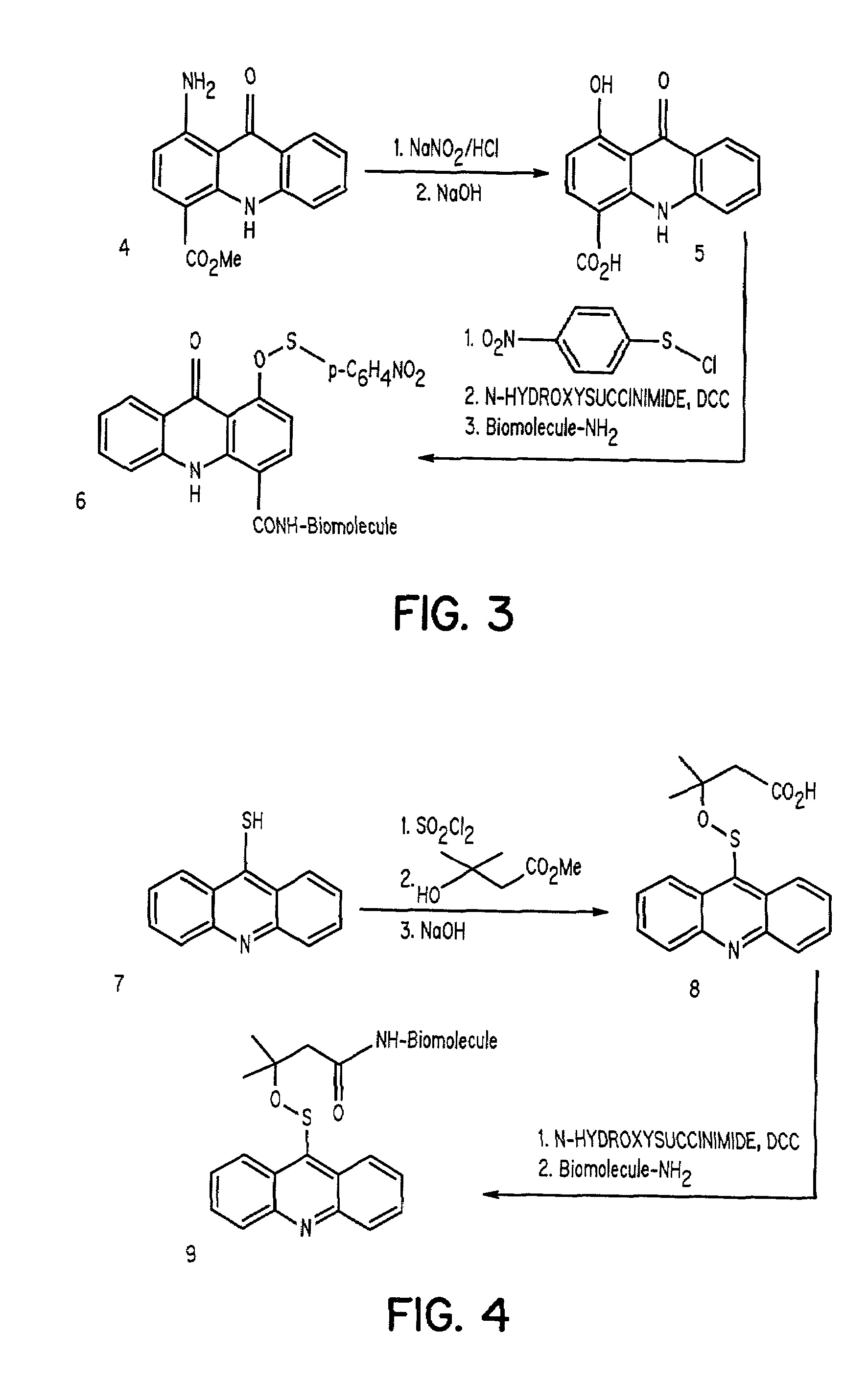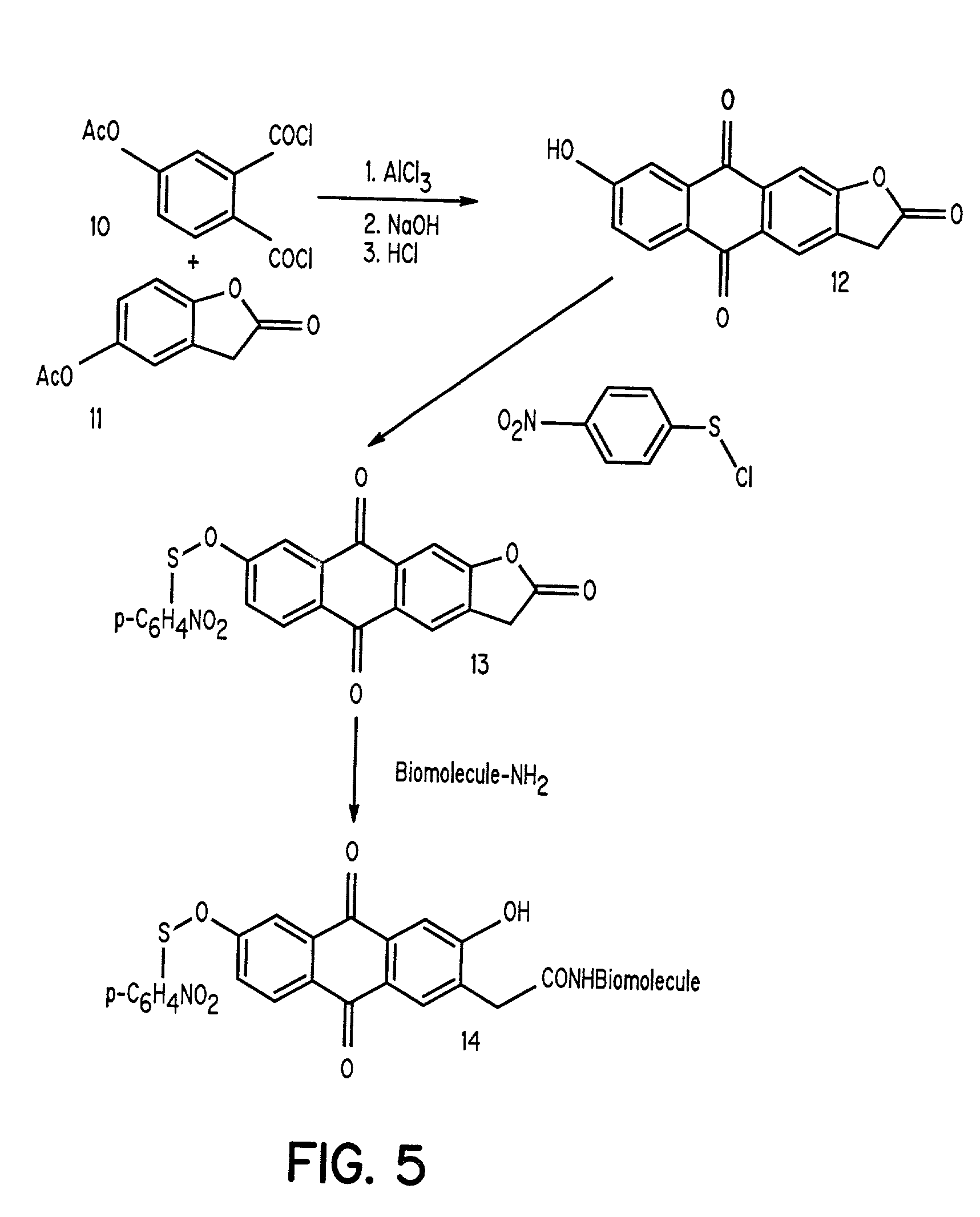Aromatic sulfenates for type I phototherapy
a technology of sulfenates and sulfenates, applied in the direction of peptide/protein ingredients, energy-modified materials, aerosol delivery, etc., can solve the problems of prolonged cutaneous photosensitivity, chemical heterogeneity, cell death,
- Summary
- Abstract
- Description
- Claims
- Application Information
AI Technical Summary
Benefits of technology
Problems solved by technology
Method used
Image
Examples
example
Synthesis of Sulfentate-bombesin (7-14) Conjugate
[0041]The peptide is prepared by fluorenylmethoxycarbonyl (Fmoc) solid phase peptide synthesis strategy with a commercial peptide synthesizer from Applied Biosystems (Model 432A SYNERGY Peptide Synthesizer). The first peptide cartridge contains Wang resin pre-loaded with an amide resin on 25 -μmole scale. The amino acid cartridges are placed on the peptide synthesizer and the product is synthesized from the C- to the N-terminal position. Coupling of the Fmoc-protected amino acids (75 μmol) to the resin-bound free terminal amine (25 μmol) is carried out with 2-(1H-benzotriazol-1-yl)-1,1,3,3-tetramethyluronium hexafluorophosphate (HBTU, 75 μmol) / N-hydroxybenzotriazole (HOBt, 75 μmol). Each Fmoc protecting group on the solid support was removed with 20% piperidine in dimethylformamide before the subsequent amino acid was coupled to it. The last cartridge contains sulfenate acid, which is coupled to the peptide automatically, thus avoidin...
PUM
| Property | Measurement | Unit |
|---|---|---|
| wavelength | aaaaa | aaaaa |
| wavelength | aaaaa | aaaaa |
| wavelength | aaaaa | aaaaa |
Abstract
Description
Claims
Application Information
 Login to View More
Login to View More - R&D
- Intellectual Property
- Life Sciences
- Materials
- Tech Scout
- Unparalleled Data Quality
- Higher Quality Content
- 60% Fewer Hallucinations
Browse by: Latest US Patents, China's latest patents, Technical Efficacy Thesaurus, Application Domain, Technology Topic, Popular Technical Reports.
© 2025 PatSnap. All rights reserved.Legal|Privacy policy|Modern Slavery Act Transparency Statement|Sitemap|About US| Contact US: help@patsnap.com



